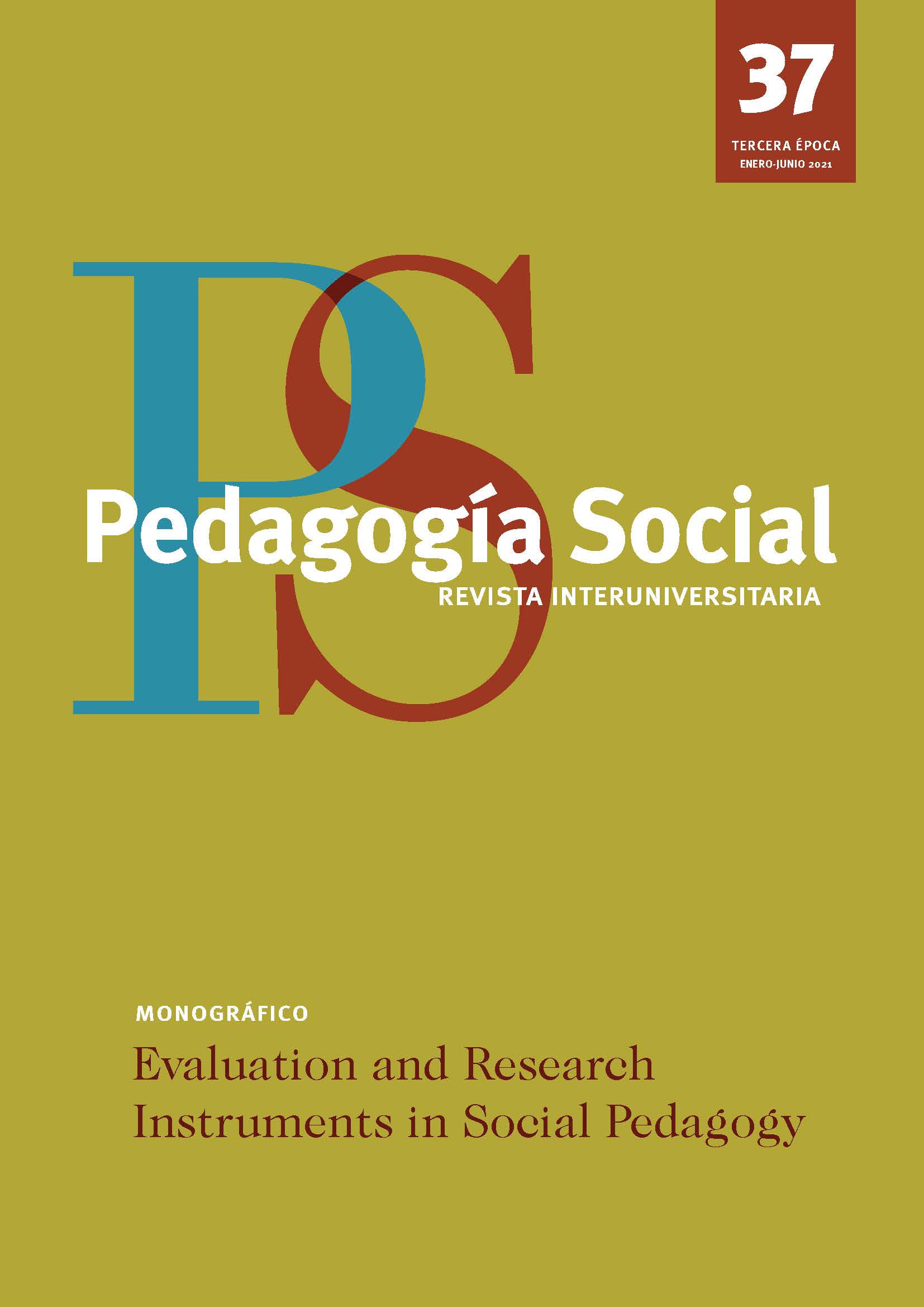Estudo exploratório sobre tendências na prática profissional contra violência em configurações de ação socioeducacional
DOI:
https://doi.org/10.7179/PSRI_2021.37.09Palavras-chave:
nãoviolência, ética, violência, cultura de pazResumo
Introdução: O papel central da educação social como disciplina que ofrece uma ação bidirecional e mediação entre as estruturas sociais, das quais emanam várias formas de violência estrutural e expõem os cidadãos constrangidos. Expressa-se a diferença entre as formas de violência objetiva e subjetiva e como a cultura de paz oferece um quadro de análise útil para pensar, a partir dela, a prática socioeducacional. Metodologia: Por meio de entrevistas, os processos de significação da violência foram coletados junto a um grupo de vinte e cinco profissionais. São analisados, utilizando a metodologia da teoria fundamentada, utilizando o software Atlas.ti com sistema de codificação in vivo. Resultados: Por um lado, expõem-se os efeitos da violência vivida e sua normalização na prática socioeducacional e, por outro, a constatação de três vertentes profissionais: vocacional-afetiva, estruturante-coercitiva e ético-reflexiva, com diferentes repercussões na a dinâmica do ciclo da violência em ambientes de ação socioeducacional. Discussão: Propõe-se um aprimoramento da prática socioeducacional por meio do desenvolvimento da tendência profissional ético-reflexiva, diante das limitações manifestadas nas outras duas tendências.
Downloads
Downloads
Publicado
Como Citar
Edição
Secção
Licença
Direitos de Autor (c) 2021 Pedagogía Social. Revista Interuniversitaria

Este trabalho encontra-se publicado com a Licença Internacional Creative Commons Atribuição-NãoComercial-CompartilhaIgual 4.0.
Derechos de reproducción y archivo
La versión publicada de los artículos podrá ser autoarchivada por sus autores en repositorios institucionales y temáticos de acceso abierto. No obstante la reutilización total o parcial de los mismos en nuevos trabajos o publicaciones deberá ser autorizada por Pedagogía Social. Revista Interuniversitaria.
Los trabajos publicados deberán ser citados incluyendo el título de la Revista, Pedagogía Social. Revista Interuniversitaria, nº, páginas y año de publicación.
Responsabilidades éticas
Pedagogía Social. Revista Interuniversitaria no acepta material publicado anteriormente en otros documentos. Los/as autores/as son responsables de obtener los permisos oportunos para reproducir parcialmente material de otras publicaciones y citar correctamente su procedencia. Estos permisos deben solicitarse tanto al autor/a como a la editorial que ha publicado dicho material.
Es obligación de Pedagogía Social. Revista Interuniversitaria detectar y denunciar prácticas fraudulentas.
En la lista de autores/as firmantes deben figurar únicamente aquellas personas que han contribuido intelectualmente al desarrollo del trabajo.
La revista espera que los/as autores/as declaren cualquier asociación comercial que pueda suponer un conflicto de intereses en conexión con el artículo remitido.
Los autores deben mencionar en el manuscrito, preferentemente en el apartado del método, que los procedimientos utilizados en los muestreos y controles han sido realizados tras la obtención de consentimiento informado.
La revista no utilizará ninguno de los trabajos recibidos con otro fin que no sea el de los objetivos descritos en estas normas.
Aviso de derechos de autor/a
© Pedagogía Social. Revista Interuniversitaria. Los originales publicados en las ediciones impresa y electrónica de esta Revista son propiedad del Pedagogía Social. Revista Interuniversitaria, siendo necesario citar la procedencia en cualquier reproducción parcial o total.
Salvo indicación contraria, todos los contenidos de la edición electrónica se distribuyen bajo una licencia de uso y distribución “Creative Commons Reconocimiento-No Comercial 3.0 España” (CC-by-nc). Puede consultar desde aquí la versión informativa y el texto legal de la licencia. Esta circunstancia ha de hacerse constar expresamente de esta forma cuando sea necesario.






